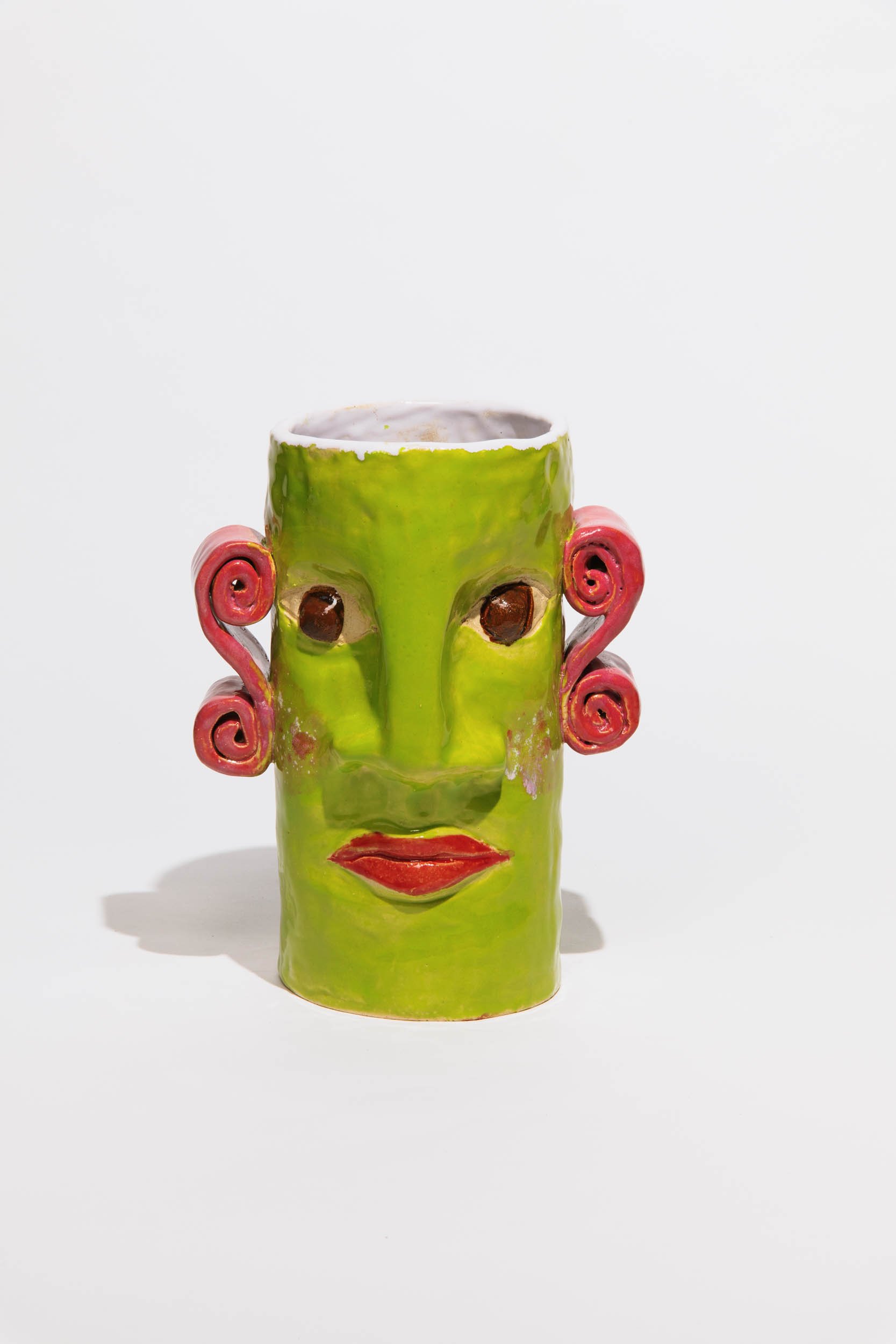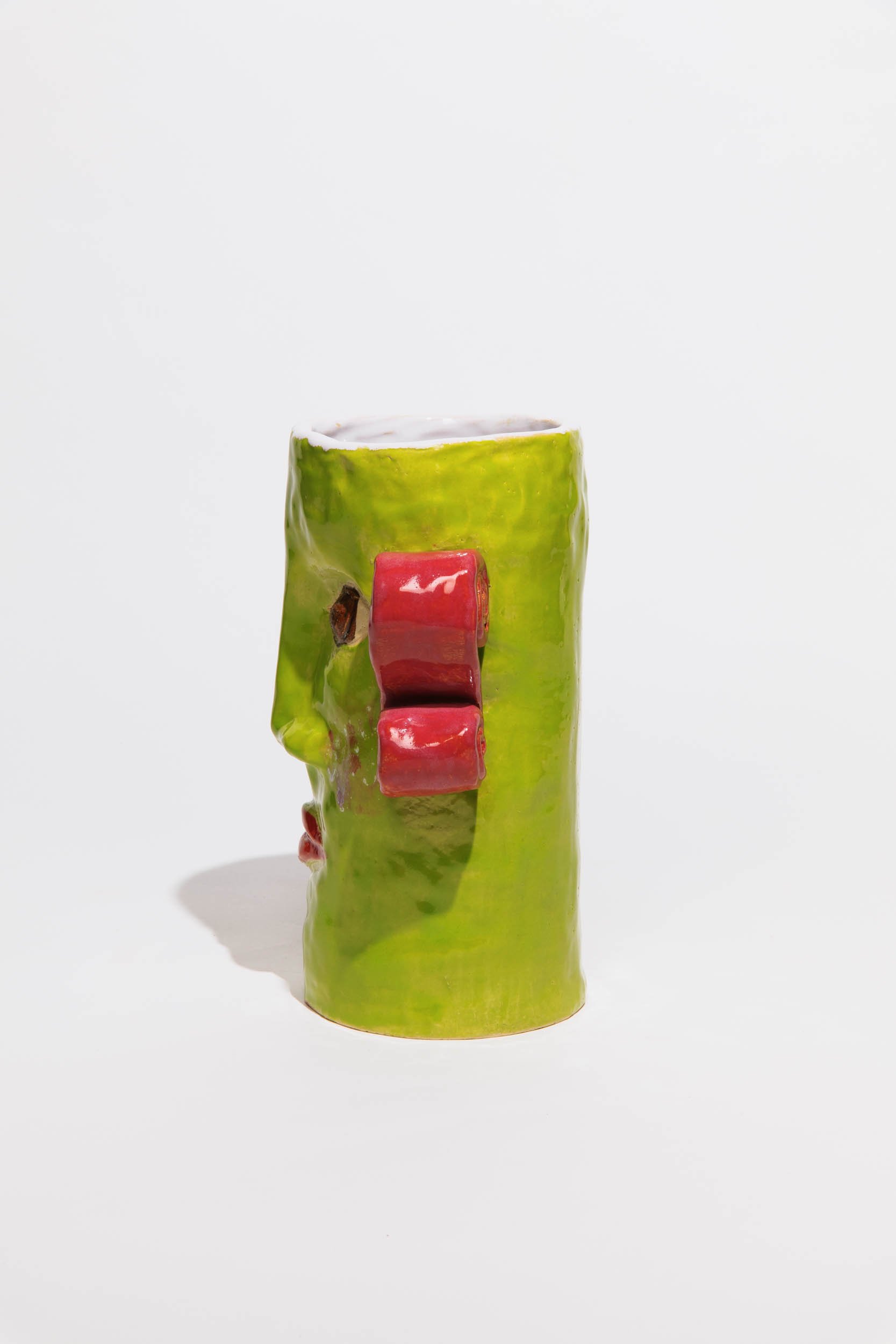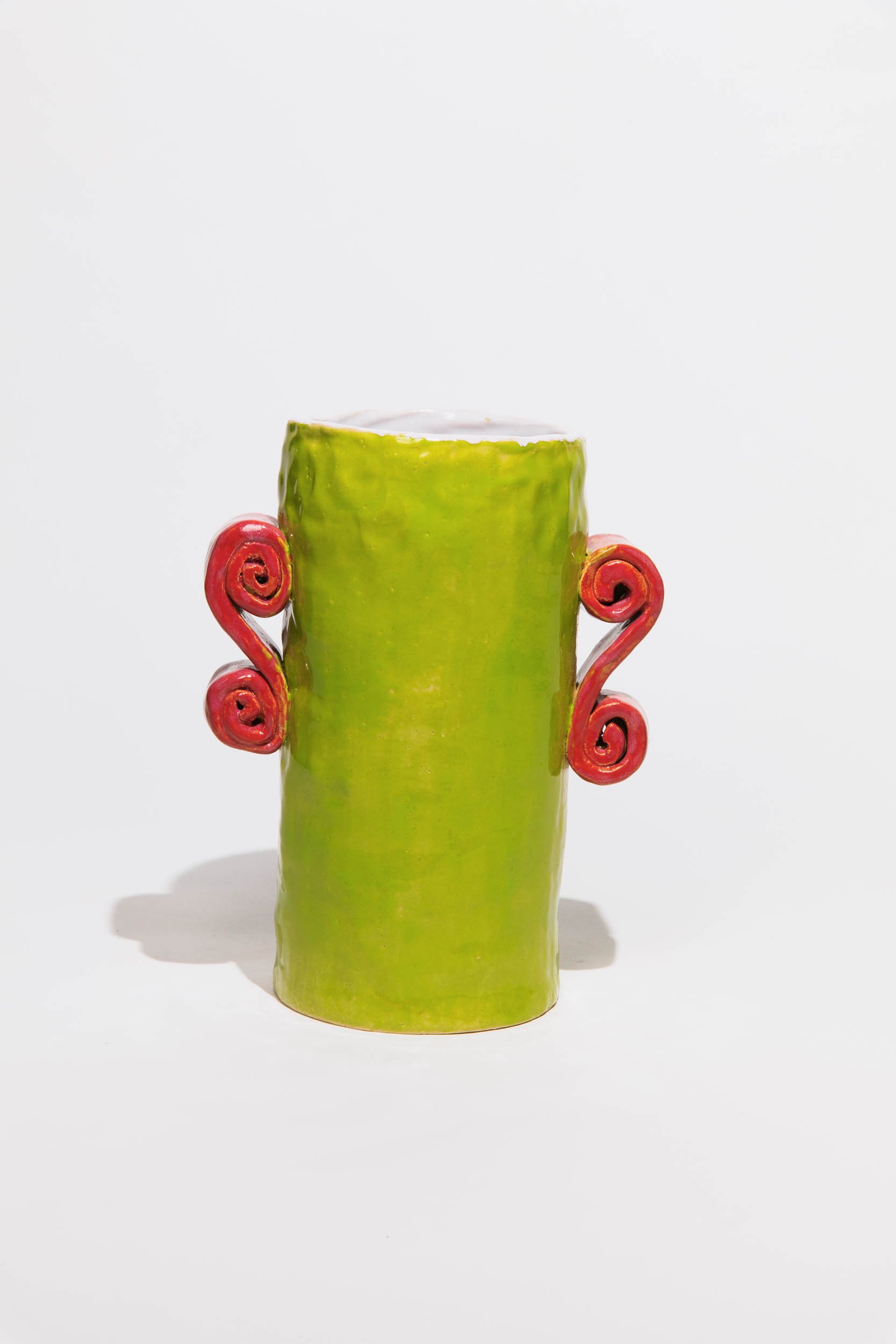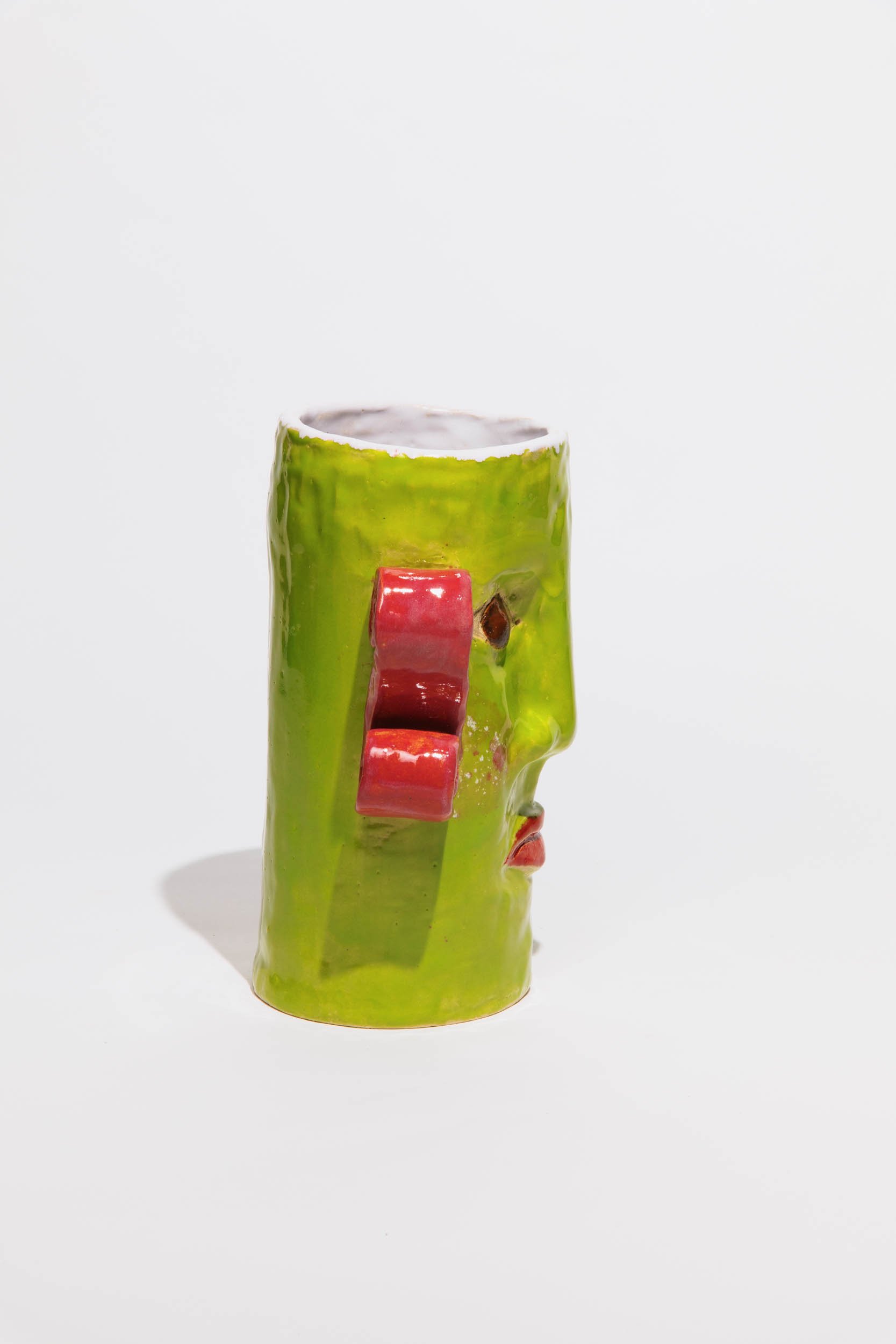Anna Riess - 'Mr. Pea (Jakob's Brother)', ceramic object, 2024




Anna Riess - 'Mr. Pea (Jakob's Brother)', ceramic object, 2024
This ceramic sculpture, titled Mr. Pea (Jakob’s Brother), takes the form of a green head - an imaginative exploration of identity, recognition, and emotional disguise. Its vivid pea-green glaze evokes freshness, growth, and vulnerability, linking the object to the tender, protective nature of a pea within its pod. On either side of the head, spiral-shaped forms emerge like handles—ancient symbols of life, continuity, and transformation - inviting physical interaction and symbolic reflection.
With two subtly shifting faces, the piece plays with duality, mimicry, and the instability of self-image. The spirals act as both anchor and invitation - suggesting the cyclical process of becoming, the winding path toward inner recognition, and the desire to grasp what is constantly evolving. Hovering between portrait, mask, and totem, Mr. Pea questions what it means to be seen, and to hold onto oneself in a world of performance.
Anna Riess is a multidisciplinary artist and cultural anthropologist based in Vienna. Her work explores themes of embodiment, emotion, and interbodily relations through materials like clay, metal, and textiles. Deeply influenced by her experience of motherhood, she transforms everyday objects into symbolic forms - one of her gestures she describes as the “nippelization of the everyday.”
Riess is the co-founder of the Clayground retreat and the creator of Circle of Clay, a workshop series she has led at institutions such as the Museum of Applied Arts in Vienna and Hotel Kai36 in Graz. Her workshops invite participants - regardless of prior experience - to develop their own sculptural language through hands-on engagement with clay.
Her sculptural objects possess a strong visual identity and tactile presence, marked by a recognizable aesthetic and a willingness to push the boundaries of material behavior. Especially drawn to the tactility of clay, Riess explores how movement and fluidity can be captured in form - leaving the trace of the hand visible in its hardened state. With a strong interest in local materials and interdisciplinary exchange, her practice bridges artistic, social, and ecological concerns in both conceptual and applied ways.